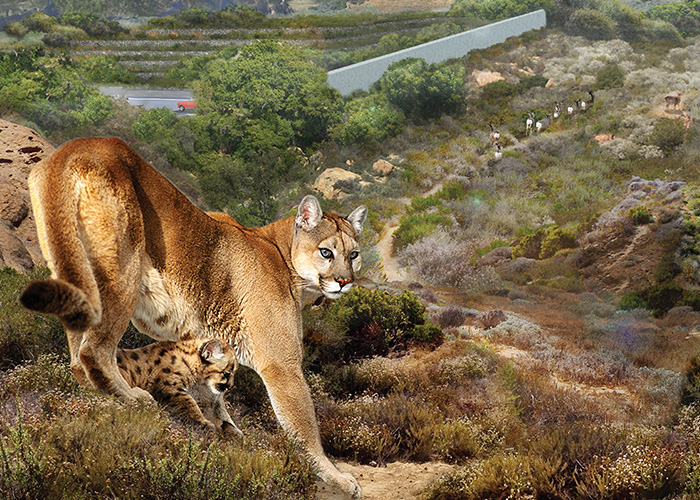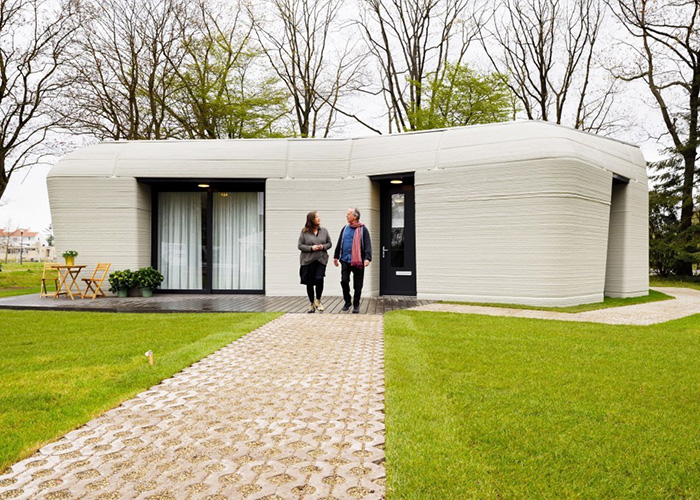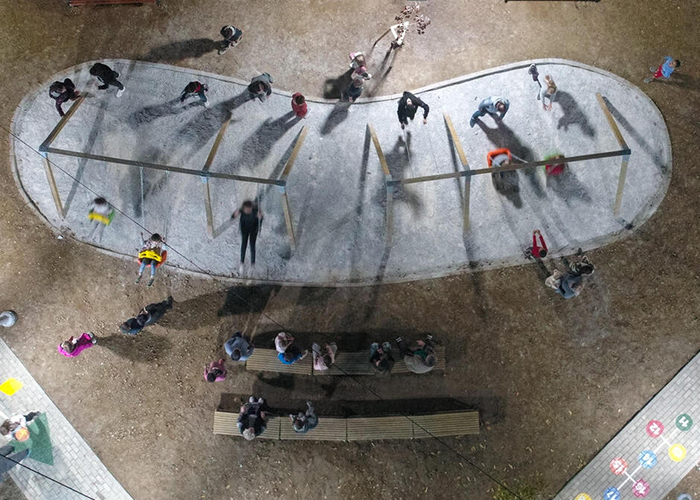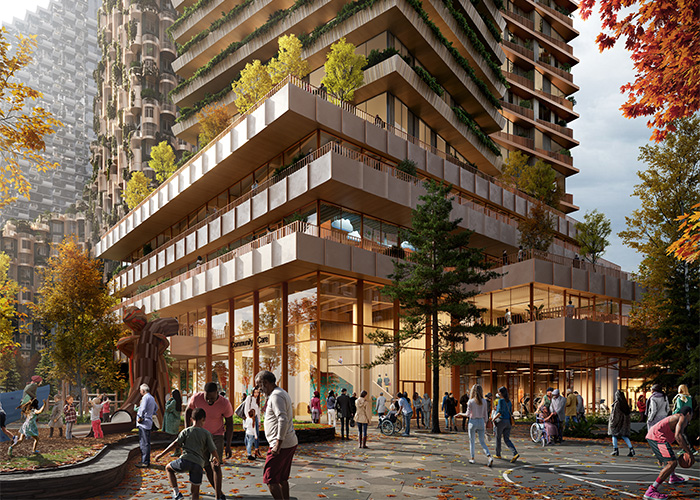Animal crossing – world’s biggest wildlife bridge comes to California highway: Landscape architects from Living Habitats have designed the world’s largest wildlife bridge, to be constructed over a California highway. The overpass will allow fauna of the Santa Monica mountains to safely cross a dangerous 10-lane stretch, writes Katharine Gammon for The Guardian. Stretching 210ft (64m) long and 165ft (50m) wide across the 101 highway near Los Angeles, the overpass is designed to allow safe passage for lizards, snakes, toads and mountain lions. An acre of local plants on either side and vegetated sound walls hope to dampen light and noise for nocturnal animals as they slip across. The project is funded by around 60% private donations and has been championed by Beth Pratt, a conservation leader with the National …
streetchat

The Guardian
Dutch couple are Europe’s first inhabitants of a 3D-printed house: The south Netherlands property, made by 3D printing a specially formulated cement through a nozzle on a robotic arm, is inspired by the shape of a boulder – a design difficult and expensive to construct using traditional methods, writes The Guardian. While properties have been partly constructed via 3D printing in France and the US, the Dutch home is said to be the first “legally habitable and commercially rented property where the load-bearing walls have been made using a 3D printer nozzle.” It is the first of five 3D-printed houses planned by construction firm Saint-Gobain Weber Beamix for a plot of land by the Beatrix canal. “It is beautiful,” said owner Elize Lutz. “It has the feel of a bunker …
12 Principles for an Effective Urban Response to Covid-19: UN-Habitat, the United Nations agency for human settlements and sustainable urban development, has developed 12 key principles to help local and national governments to prevent the spread of the virus and build preparedness for the future. The principles relate to accessibility, flexibility, design, management and maintenance, connectivity, and equitable distribution, and cover short, medium and long-term interventions. Read about them on ArchDaily. One in four cities cannot afford climate crisis protection measures: One in four cities around the world lack the money to protect themselves against climate breakdown, even though more than 90% are facing serious risks, according to research by the Carbon Disclosure Project. A survey of 800 cities found that 43%, representing a combined population of 400 million people, …
Toronto swaps Google-backed ‘smart’ city plans for people-centred vision: Canada’s largest city has moved towards affordability, sustainability and environmentally-friendly design in a new vision for the Quayside waterfront – a year on from parting with Google-affiliated Sidewalk Labs. Waterfront Toronto launched an international competition in March to secure a new development partner for the Quayside lands, to build “a sustainable community for people of all ages, backgrounds, abilities and incomes.” The Quayside development will provide “market and affordable housing options for individuals and families. It will offer opportunities for aging in place, including the supports and amenities that will allow seniors to live independently. Inclusive economic development opportunities will create jobs and spaces for business owners that reflect Toronto’s diversity,” they write. The call for new proposals comes nearly a year after the Sidewalk Labs partnership was called off, a “stinging defeat” reports …





